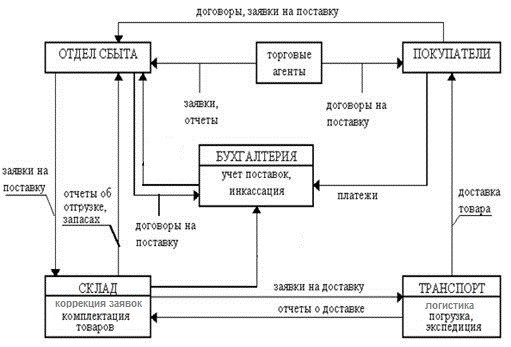
- Title page
- 2. project Summary
- Below is an example of a business plan for a fictitious radio:
- 3. Market analysis, overview and SWOT-analysis industry
- The structure of this chapter as follows:
- 4. The main idea of the business project and its implementation
- In our example, after the disclosure of radio base basic idea will need to answer questions such:
- If you make this section a brewery project, it will only change with respect to the description of the product:
- 5. Marketing and strategic plan
- The marketing plan covers:
- 6. operational plans: financial, industrial, administrative and organizational
- Financial plan
- Production plan
- Administrative and organizational plan
- 7. The calculation of the project profitability
- To calculate the profitability threshold, you need to use the following formula:
- 8. Risks and guarantees
- 9. Normative base
Below is a detailed guide, supported by examples from practice, how to write a business plan without assistance. Particular attention will be paid to the structure and content of the sections of the business plan. Any successful entrepreneurial activity begins with a well-written business plan., which indicates the idea of business and ways of its implementation, as well as the main indicators of the costs and profitability of the organization of a new business.
No economic discipline does not allow conventional template, according to which you want to make a business plan, because any business plan is made individually for each specific start-up. The main objective of preparing a business plan is, to detail and ordered to submit all the data on the life cycle of a new business, its individual elements, and also to calculate the total cost of the project and the period of reaching break-even point with the expected income.
Despite, that every business plan requires an individual approach, there is a certain standard scheme document preparation, wherein the following elements are distinguished:
- Cover the document with specific information about the founders of the new company and the author of the project. It also indicates the main idea of the business and its value.
- Summary document is intended to prove the investment attractiveness of raising funds in the project.
- market Analytics, proving the viability of a new project.
- The main idea of new business and a brief description of its realization.
- A detailed marketing plan.
- Competent production plan.
- A detailed financial plan for the next three to five years.
- Administrative and organizational plan.
- Calculation of business profitability.
- Overview of the possible risks and guarantees.
- The list of regulatory documents, necessary to start the project.
- apps.
To take on writing a business plan is worth in the presence of an actual information base, which will serve as a reliable source in the organization of activities of the new company.
Title page
Cover the document must meet the main requirement - be functional and include the following information:
- the name of the project. for example: "Base project and development of commercial radio" Online radio A ".
- Organizational and legal form of the project;
- Name of entity, Author of the project or, contacts. If the project involves several responsible persons, you should make a list with the division of responsibilities:
- Author of the project: Petrov I.I., founder, author of the idea, contact number
- Contributors: Sidorov NN. (finance director), contact number
- Ivanov AA. (marketing director), contact number
- Project cost, present in the amount of initial capital. A brief description of the type of project: "This document describes step by step business plan of foundation and development within three years of commercial radio" Online radio A ", project cost $280 000. recoupment 34 month ".
- Place and year of foundation: St. Petersburg, 2014g.
so, on the front page shows a brief summary about the new project and its main indicators.
2. project Summary
Summary of the business plan is a brief and clear explanation of the main idea of the project and its main data. This section is preparing itself for, to interest potential investors, because after studying resume investor decides whether to invest their funds in its development. To prove the viability of a new project in the summary is included:
- A concise description of the project ideas and information about its relevance in the market, Distribution area of influence of the new ideas, the timing of the case and payback, and the level of profitability.
- factors, to help achieve the stated level of income, competitiveness of business and the description of the service or product lifecycle.
Below is an example of a business plan for a fictitious radio:
"Let's look at the base of the design and development of the all-Russian radio" Online radio A ", the effect of which is not limited by territorial boundaries of the Russian Federation. research, carried out on the market today and radio services detailed in section, dedicated to market analysis, clearly indicate, that includes an interactive online broadcasting round the clock work in the studio of professional staff is very interesting national youth aged 16 to 30 years old.
Today, the online radio service market is a series of automated radio stations, the lion's share of which take time music. The proposed business project is competitive and in demand due to the, that the online radio station will offer interactive shows and competitions, as well as a unique element in the form of videovklyucheniya, which will display all the action, going in the studio, including performances DJs, master classes and interviews with studio guests. In addition, it will involve social communication functions, which will provide for each student in the individual account system with personal settings after registration.
Since the project is unique and has no analogues not only in Russia, but in the world, supposed, that audience figures are no less than ten percent of the introduction onlaynradio in regional areas. Chief Financial product of the company - it is a commercial advertising as a live station, and on the official website of the company, as well as indirect advertising projects, creative projects and rubrics for sponsors.
The costs of the base station to the time-to breakeven amount $280 000.
Duration of the project is 8 months. The alleged break-even point will be reached in a year, and the estimated revenue of the order $15 000 per month.
The equity capital of the company 46%, investment capital of 50%. "
3. Market analysis, overview and SWOT-analysis industry
When preparing a business plan is very important to remember, that the basis should be taken only relevant and proven market research and analysis, trained professionals. Then the entrepreneur can predict with greater accuracy the dynamics of development of the company and its sales figures. This section presents a fresh and reliable information about the market, industry, potential buyers, the possible risks and ways of business development, which are dictated by current trends.
The structure of this chapter as follows:
- Description of industry, the capacity and the dynamics of, complemented by financial calculations. trend forecasting and market prospects.
- market conditions, the major players in the industry, their characteristics and priorities of the. Competitive properties of your own product or service.
- Portrait of a buyer and a description of the motives, which guide when making a purchase. Description of values and main points, which can be used to attract consumers.
- Choosing the most effective markets and sales channels.
- Predicting potential risks and ways of leveling.
As practice shows, this section should not be less than ten percent of the entire business plan (about seven to ten pages). Brief and clear information, provided in section, It will serve as a solid basis for further settlement, and short-term planning. In that case, if the entrepreneur is faced with the problem of lack of information, the analytical review of the market can be left to professional experts, working on outsourcing, and add the document as an expert opinion.
In our example, market analysis for a radio company involves interviewing a wide audience, who listens to radio stations, and assessment of their wishes. Having this event with the help of competent and experienced interviewers, the company will be able to identify and further attract those consumers, which will be of interest to a potential advertiser.
In that case, if a market is being studied for a company, producing consumer goods, eg, brewery, then it is worth focusing on the dynamics of market development and the number of existing competitors, as well as their power, so a full economic analysis is required here. As can be seen from the above,, the principle of the study depends entirely on the type of product or service provided and will be different for different companies.
4. The main idea of the business project and its implementation
This section of the document presents the main essence of the business., revealing his idea, and also briefly describes the main properties of the business and the principles of its implementation. Here is a description of the product life cycle., repeat purchases, as well as opportunities to expand the range, segmenting the main proposal and predicting that, how the product will change over time, adjusting to market demands.
In our example, after the disclosure of radio base basic idea will need to answer questions such:
- What format will be broadcast?
- Where exactly the studio will be located and how it will be designed?
- What characteristic properties will be inherent in this station, distinguishing it from all existing?
- How long will the selected format exist and after how long it may require changes?
- What events will need to be included in the radio program and for how long will new shows be required to maintain the interest of the audience?
- How much time will be given on the air for commercial advertising and will alternative advertising methods be used?
If you make this section a brewery project, it will only change with respect to the description of the product:
- What types of drink will be produced at the enterprise and why should customers like it??
To answer this question, you can rely not only on the properties of the drink itself, but also use as a marketing device a beautiful legend of creating a company, how did it, eg, Producers of Russian Tinkoff beer and Ukrainian Lvov beer.
- What assortment does the company plan to produce during the work of the enterprise and how much time each individual type of product will be produced?
- Which product will be chosen as the company's business card?
- What changes does the manufacturer plan in the assortment after the completion of the first product life cycle?
Plan structure is based on, that after reading the introductory chapters, dedicated to market analysis and business idea description, study of detailed information, concerning marketing, production and administrative matters, will be accepted by potential investors as a logical embodiment of the described idea. To make it go that way, as the author of the business project intended, it is necessary to correctly write everything in the indicated chapter, based on current market indicators.
5. Marketing and strategic plan
Here comes the turn of the algorithms, using practical techniques.
The marketing plan covers:
- The scheme of presentation of goods or services on the market
- Development strategy
- Basic pricing principles
- Sales channels and sales system
- Promotion strategy
The scheme for the withdrawal of goods or services to the market is most often presented in the form of a Gantt chart, which is built in this way: the ordinate axis includes a list of activities, and the abscissa axis represents dates. Axis intersection points will show the costs of these activities. Such a view will help not only to indicate the volume and timing of work., but also immediately see in general all financial expenses.
The development strategy of the company is a kind of plan to gain its niche and a certain share of customers, backed by an analysis of market conditions and competitor power. Here you can use some standard tricks to gain a foothold in the market., eg, dumping policy, weakening business competitors, organization of unique communication with the buyer. The strategic plan is built exclusively for each specific project and is a long-term plan., for the next three to five years, large-scale events, designed to increase company profits. For clarity, such a plan is better to issue in the form of a task tree, where the main goal is divided into subtasks and side events.
When it comes to pricing, then it’s better to apply one of the existing schemes based on the economic calculation, taking into account the actual costs of sales, projected earnings and purchasing power.
Investors always pay great attention to the system of product sales, which, for clarity, is most convenient to present in the form of a scheme for the distribution and sale of goods or services, from the moment of receipt of the manufactured goods to the warehouse and to the purchase by the consumer. Here is one of the options for such a visual scheme:

In this way, a sales system is usually built using two main and two secondary sales channels, then the implementation looks like a percentage of something like this:
- 42% products are sold through the main sales system and wholesale customers, which include retail chains, supermarkets;
- 30% products come true through the company’s company network;
- 20% products can be sold through the company's branded online store;
- 18% products are sold through promotions and through the trading networks of the company's partners.
In this section, it is also worth paying attention to the company's advertising policy and describing future large-scale advertising projects and media plans..
6. operational plans: financial, industrial, administrative and organizational
Financial plan
The most important part of any business plan is the financial plan., which can be prepared as directly by the author of the project, and a visiting professional, if the author does not have sufficient experience and knowledge in this field. In the latter case, all calculations of the financial plan are certified by the signature of the responsible executor.. Many novice entrepreneurs turn to investment companies to calculate finances, which will help in the future to give additional guarantees to potential investors of the project, since forecasts, compiled by independent experts, are more accurate.
In the financial plan, all data on the income and expenses of the future project is collected, taking into account the chosen development strategy of the company and planning of internal costs, including payroll, production costs. The financial plan is usually in the form of a table., eg, such:

Production plan
This plan is an algorithm for the release of products from the moment of receipt of raw materials in the production hall and until the transfer of finished products for sale. In addition to a detailed description of all technological processes, the plan includes a list of the company's main partners., suppliers of raw materials and components, list of equipment and requirements for its renovation.
The production plan is usually built taking into account the following stages:
- Detailed description of raw materials and requirements for their quality
- List of suppliers
- Receiving raw materials and its pre-production preparation
- Technological process 1
- Technological process 2
- Output of finished products from the production workshop, product testing and packaging
- Transfer of finished products to the warehouse
Administrative and organizational plan
The administrative and organizational plan is a structured diagram of all processes, taking place in the enterprise, including not only business processes, but also employees of the company, as well as the company's events. Here will be presented a staffing table indicating the salary of each employee and his area of responsibility, as well as detailed diagrams of the interaction between departments.
In this way, the job responsibilities of employees and the processes they perform will be reflected in a kind of matrix:

Pre-built schemes of interaction between employees and departments will help the management to rationally and effectively distribute responsibility and burden between all departments of the company and minimize the cost of maintaining personnel.
It would also be useful to include a list of business management activities in this plan., eg, staff development, participation in competitions, industry exhibitions and programs from the state.
7. The calculation of the project profitability
This small section of the business plan will focus on financial and economic calculations., reflecting the profitability of a new business from the moment of investment of fixed capital and the received investment funds in the business to reaching the break-even point with the subsequent payback of the project. The given long-term forecast will help to calculate future income, on the value of which the interest of investors in participating in this project will directly depend.
To calculate the profitability threshold, you need to use the following formula:
R = D * Zconst / (D – WITH)
Where D - income, WITH – variable costs, Zconst – fixed costs, R — profitability threshold in monetary terms.
To make the long-term calculation more accurate, it is also worth taking into account the level of inflation and the associated increase in the cost of the wage fund, investment fund deductions, production renovation costs.
For clarity, the calculations can be presented in the form of a Gantt chart with the highlighting of the moment of reaching the break-even point and the amounts of future income.
| 1 neighborhood | 2 neighborhood | 3 neighborhood | 4 neighborhood | |||||
|---|---|---|---|---|---|---|---|---|
| project creation | consumption | income | consumption | income | consumption | income | consumption | income |
| market launch | 1200 | 120 | ||||||
| event 1 | 1800 | 152 | ||||||
| event 2 | 1600 | 192 | ||||||
| event 3 | 1950 | 1200 | ||||||
| event 4 | 150 | 350 | ||||||
| event 5 | 1200 | 3540 | ||||||
| event 6 | 1650 | 4895 | ||||||
| event 7 | 1485 | 5899 | ||||||
| event 8 | 1658 | 5780 | ||||||
| total | -1080 | -3806 | 899 | 8536 | ||||
In bold the exit to the break-even point is marked
8. Risks and guarantees
This chapter is devoted to the description and analysis of those risks, that exist in the industry and are confirmed by market SWOT analysis. When drafting a chapter, you should be very responsible in listing the risks, developing an alternative strategy for each of them, which will help to overcome possible difficulties and level costs, caused by force majeure.
This chapter can be supplemented with a table with risk management measures, eg, in the event of a dumping policy by competitors or a crisis situation in the sales market with the loss of one of the sales channels:
|
risk |
Responsible department |
measures to eliminate risks |
| Unfavorable for the company policy of competitors | Marketing Department | action plan |
| Problems with the supply of raw materials from suppliers | Department of Foreign Economic Activity, Purchasing Department, Legal Department | action plan |
| Deterioration of the economic situation on the market | Analytical Department, top managers of the company | action plan |
9. Normative base
This chapter provides a complete list of documentation, regulations, permissions, tolerances, licenses and certificates, which must be at the disposal of the company for the successful and legal conduct of business, as well as costs and requirements for obtaining them. If the company's management already has some documents at its disposal, then you need to note this in the list and accompany the business plan with copies of these documents.
In conclusion, it remains to say, that a competent business plan should contain all the necessary information, presented in a concise and clear presentation, highlighting the main points, which are company finances and new business forecasts. The volume of a business plan should not exceed one hundred sheets, and the minimum size is 70 sheets. To make economic information more visual for potential investors, it is worth accompanying the document with charts, tables and diagrams. What to give up when writing a business plan, so it's from emotional presentation and the use of unverified or unreliable data.











